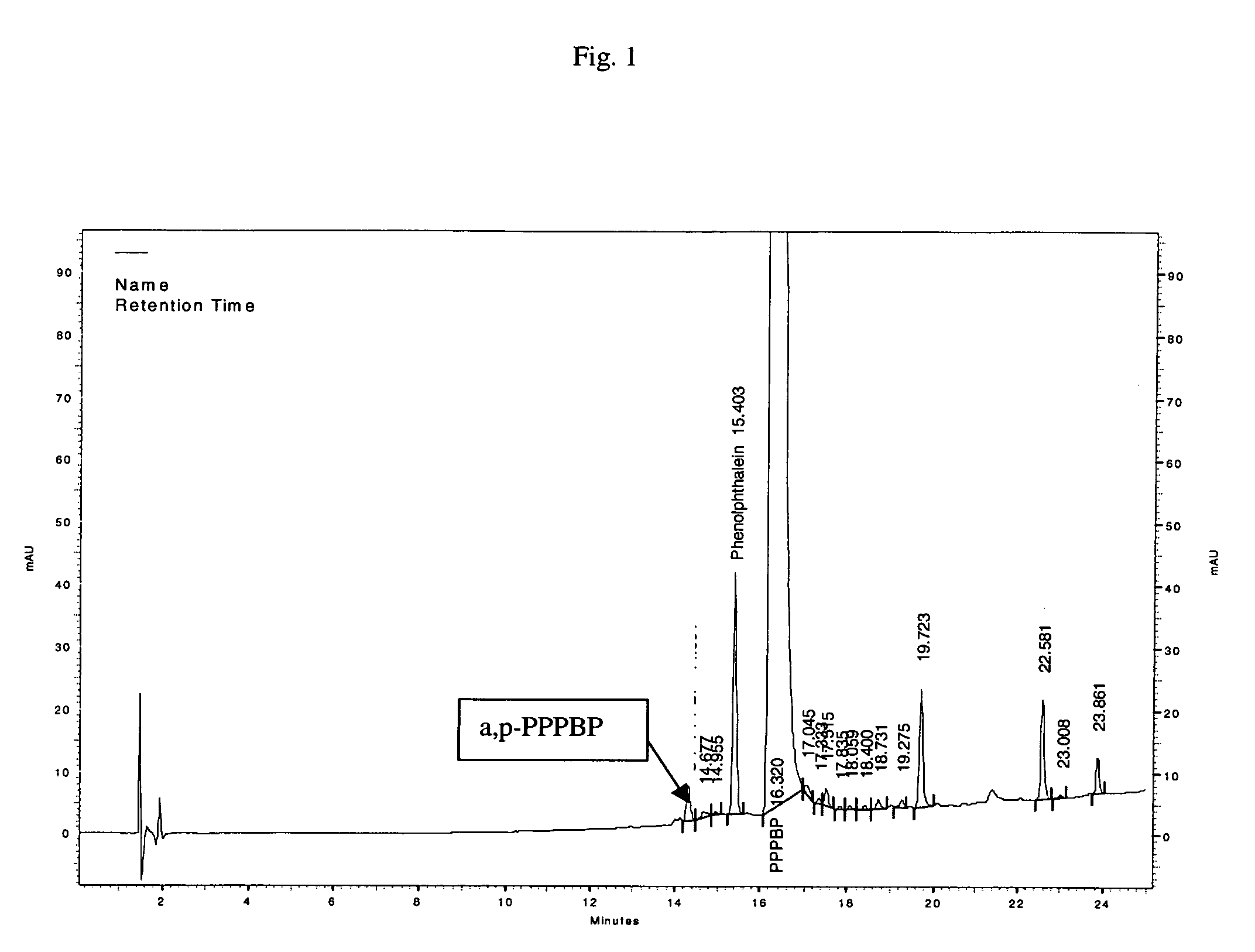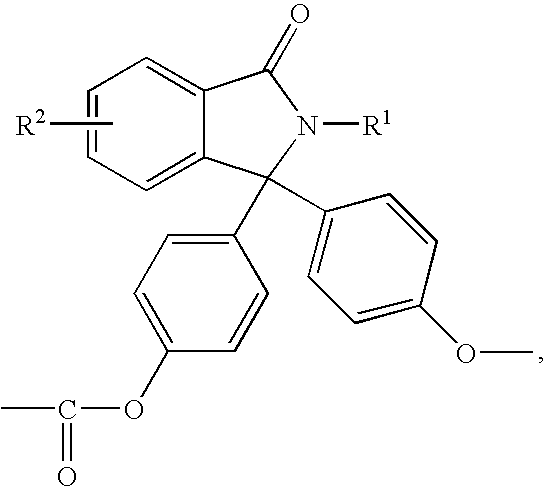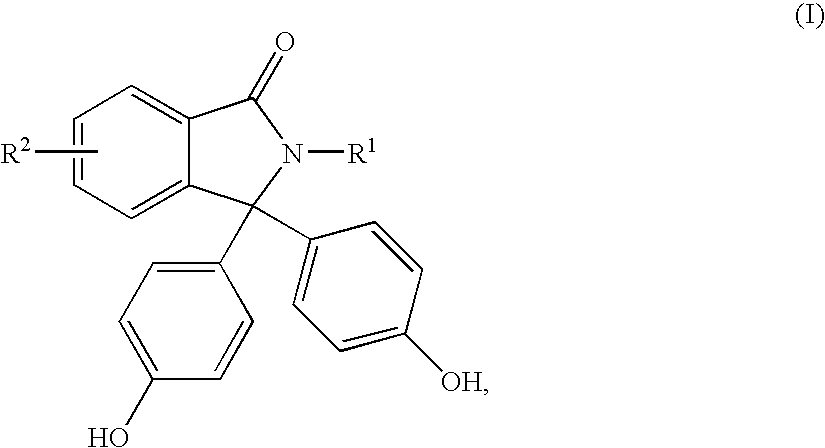Methods for producing and purifying 2-hydrocarbyl-3,3-bis(4-hydroxyaryl)phthalimidine monomers and polycarbonates derived therefrom
a technology of phthalimidine monomers and polycarbonates, which is applied in the field of resin blends and articles comprising thermoplastic polymers derived from 2hydrocarbyl3, 3bis (4hydroxyaryl) phthalimidine monomers, can solve the problem of inability to identify the critical impurity of 2-hydrocarbyl-3-[(4-hydroxyaryl)(2-hydroxyaryl, phthalimidine) in these applications in error
- Summary
- Abstract
- Description
- Claims
- Application Information
AI Technical Summary
Benefits of technology
Problems solved by technology
Method used
Image
Examples
example 11
is a procedure for preparing PPPBP monomer.
[0114] 1. 37.27 Kg aniline and 11.4 Kg acqueous hydrochloric acid (HCl) (32% conc.) were transferred to glass lined reactor and stirred for 1 hour. [0115] 2. Heat slowly to 160° C., collect water and aniline azeotrope in receiver; water collected=7.75 liters, aniline collected=2.5 liters (Time=2-3 Hrs). [0116] 3. Separate the aniline layer and charge back into the reactor. [0117] 4. Add 31.83 Kg of phenolphthalein (PP) to the reactor. It is also possible to add all of the aniline, HCL and phenolphthalein together. The molar ratio of Aniline:HCl:PP was 4:1:1. A molar ratio of 7:1:1 was also sometimes used. 3:1:1 is also possible. [0118] 5. Maintain temperature at (155±2° C., 20-22 Hrs). In some instances the temperature may be subsequently reduced to 145±2 deg. C. The reaction time may be increased from 24 hrs. to 45 hrs due to slow kinetics. The reaction is continued until phenolphthalein detected in the reaction mass was reduced to about 1...
example 12
is a preparation of a 45 mol % PPPBP / BPA copolymer having a YI of 5.8.
BPA (74 lbs), methylene chloride (CH2Cl2) (130 gallons), water (33 gallons) and a 70 wt % solution of methyltributylammonium chloride in water (900 ml) are charged to a reactor. A 50 wt % NaOH solution (50 lbs) is added to the reactor and the mixture is stirred. 611 lbs of a 17 wt % in caustic PPPBP solution (prepared by dissolving under nitrogen 250 kg of PPPBP in 2412 lbs water and 235 lbs of 50 wt % NaOH solution) is then charged to the reactor. It was found that it was critical to add the BPA, the NaOH and the monomer solution in that order. If the monomer solution were added before the NaOH, the monomer would precipitate and this would lead to bad color among other problems. Phosgene flow is started at 200 lbs / hr. A 33 wt % paracumyl phenol (PCP) solution in CH2Cl2 (7.53 kgs) is co-fed to the reactor at a constant rate starting at 25% of theoretical phosgene and ending at around 75% of theoretical phosgene. ...
PUM
| Property | Measurement | Unit |
|---|---|---|
| yellowness index | aaaaa | aaaaa |
| yellowness index | aaaaa | aaaaa |
| temperature | aaaaa | aaaaa |
Abstract
Description
Claims
Application Information
 Login to View More
Login to View More - R&D
- Intellectual Property
- Life Sciences
- Materials
- Tech Scout
- Unparalleled Data Quality
- Higher Quality Content
- 60% Fewer Hallucinations
Browse by: Latest US Patents, China's latest patents, Technical Efficacy Thesaurus, Application Domain, Technology Topic, Popular Technical Reports.
© 2025 PatSnap. All rights reserved.Legal|Privacy policy|Modern Slavery Act Transparency Statement|Sitemap|About US| Contact US: help@patsnap.com



